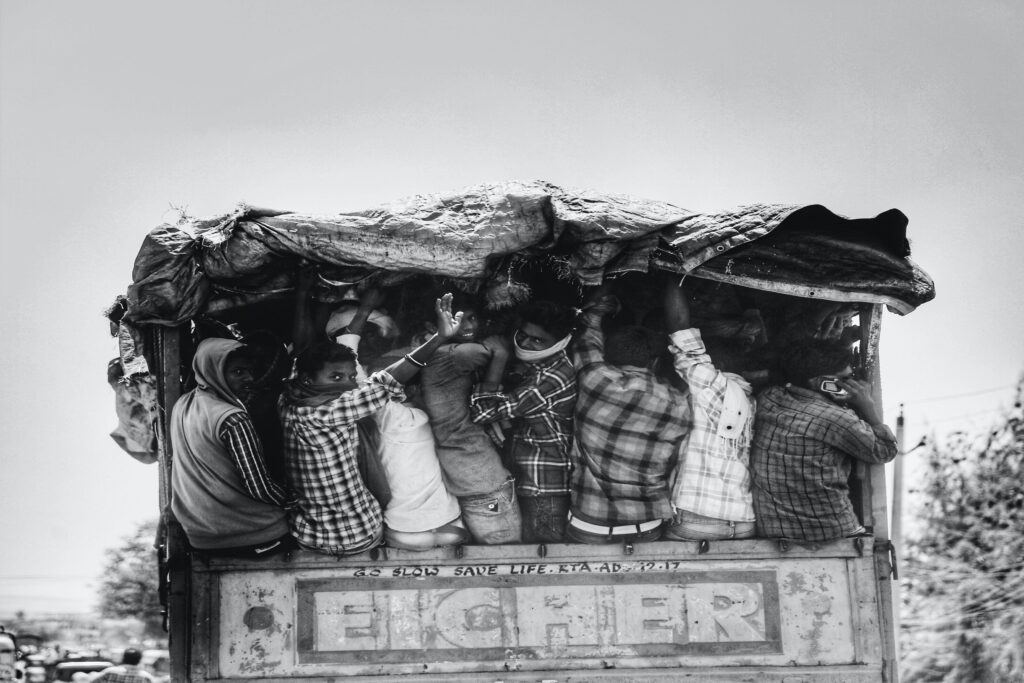
Learning From the Exodus of ‘Invisible Hands’ Which Run Indian Cities
The COVID-19 pandemic destabilised working mechanisms in India since the 21-day lockdown was announced in the country on 24th March 2020. State boundaries were sealed, public and inter-state public and private transport were completely stopped. This created havoc, but the worst hit were migrant labourers who, with all economic activities halted, could neither work (and earn), nor could travel back home.
As a result, thousands of migrant labourers started to walk toward their native towns and villages. There is no count of how many of them were returning from Delhi to UP, from Maharashtra and Goa to rural Karnataka, from Hyderabad to Rajasthan. In Delhi alone, the lives of approximately two lakh migrants were at stake. Amidst the mismanagement and blame game of the Delhi and UP governments, more than 20 migrants died on the walk back home.
Both the Supreme Court and Central Government ordered States and Union Territories to make food and shelter arrangements of stranded labourers a personal responsibility of the district magistrates. The UP Government arranged 1,000 buses from Noida, Ghaziabad, Bulandshahr, Aligarh, Hapur, Meerut and Agra to ferry people from the border to their villages.
The Delhi government deployed 100 buses to ferry people from the border up to Hapur in west UP. The Bihar government decided to house migrant workers in quarantine camps. In Kerala, the government opened 4,603 camps housing 1.44 lakh migrant workers. In Tamil Nadu, labourers who were trying to catch a homeward-bound train were lodged at various community centres. The Maharashtra government set up 262 relief camps across the state which continue to provide food and shelter to 70,399 migrant labourers/homeless people.
“The migrant workers have consistently been a sort of invisible class of workers in policy-making. Most of our social security benefits and delivery are tied to a particular location, usually the place of birth. Historically, we have been a country which has just assumed that people don’t move, which is surprising because so many of us are migrants,” says Professor Chinmay Tumbe of IIM, Ahmedabad.
The 2017 Economic Survey of India estimates that the magnitude of inter-state migration in India was close to nine million annually between 2011 and 2016, while Census 2011 pegs the total number of internal migrants in the country (inter-and intra-state movement) at 139 million. Uttar Pradesh and Bihar are the biggest source states, followed closely by Madhya Pradesh, Punjab, Rajasthan, Uttarakhand, Jammu & Kashmir and West Bengal; the major destination states are Delhi, Maharashtra, Tamil Nadu, Gujarat, Andhra Pradesh and Kerala.
Migrant labourers usually send most of their incomes back home and keep hardly anything with themselves. Therefore, they have no option but to live in poor conditions as the cost of living in cities is high. Bihar and UP together receive 60% of the money sent by migrants, followed by Odisha, Jharkhand, Tamil Nadu, and Andhra Pradesh. Remittances within India are pegged at about two lakh crore rupees a year.
Migrant labourers face numerous challenges such as cramped homes shared by many members, inadequate water and sanitation facilities, hardly any education or health facilities for them and their children, lack of social security, low income, and no formal employment contracts. Their contribution to the economy in which they work is not acknowledged and state governments hardly pay any attention to their problems.
The current lockdown has drawn the attention of the nation to the large number of migrant labourers working across various states of India and their plight. While state governments have been providing them with shelter, food and water during the lockdown, the larger need of giving them due attention and appreciation for their contribution to the economy remains unaddressed.
After all, development is a basic human right and the vulnerable migrant labourers are no exception to it. If state governments can fulfil their basic needs in such a critical situation, why can’t they do so in normal situations, when we overcome this challenge as well?
Recently, ex-RBI Governor Raghuram Rajan wrote, “India reforms only in crisis”. This pandemic has given us a chance to improve the standard of living of migrant labourers. They already contribute 10% of India’s GDP, and are slated to play a vital role in restarting the economy post lockdown. We should take the migrant labourers’ exodus as an opportunity to assess and improve their living standards.
We can start with improving the database of internal migrants as data is a prerequisite to formulating effective policies. The data can be collected at two points, first, in the hometown of the labourer and second, in the city or state where he ends up getting a job.
It should cover access to public utilities and overall living conditions such as shelter, food, water supply, health, education and some sort of social security measure. This data can be further shared at local and state levels of governance to ensure, inter alia, the safety of all labourers especially if such a crisis erupts again.
Prime Minister Narendra Modi in the recent G20 meeting emphasised keeping human beings at the centre of development. With this focus, and with our structure of cooperative federalism, we have an excellent opportunity to assess and reform the plight of our migrant labourers – the de facto invisible hands running our cities – with basic utilities, decent standard of living, and social respect which they truly deserve.
Knowledge-sharing platform is aimed at providing analytical insights into Economy, Public Policy and Foreign Policy.


